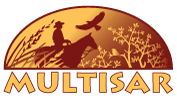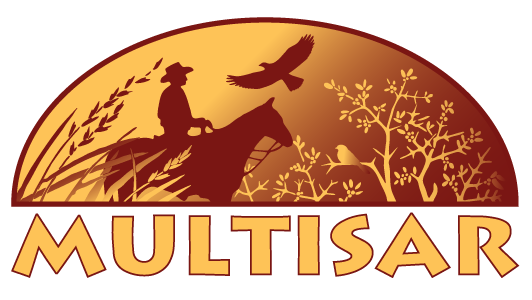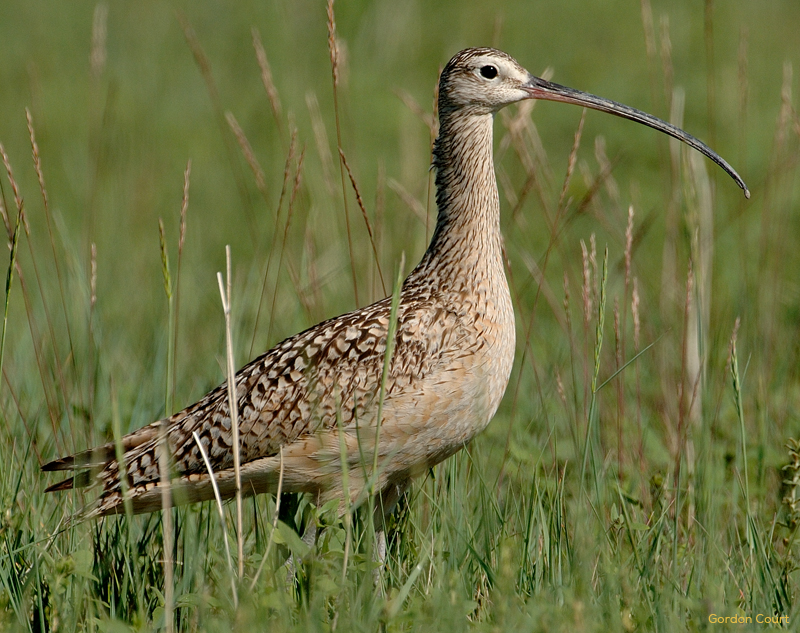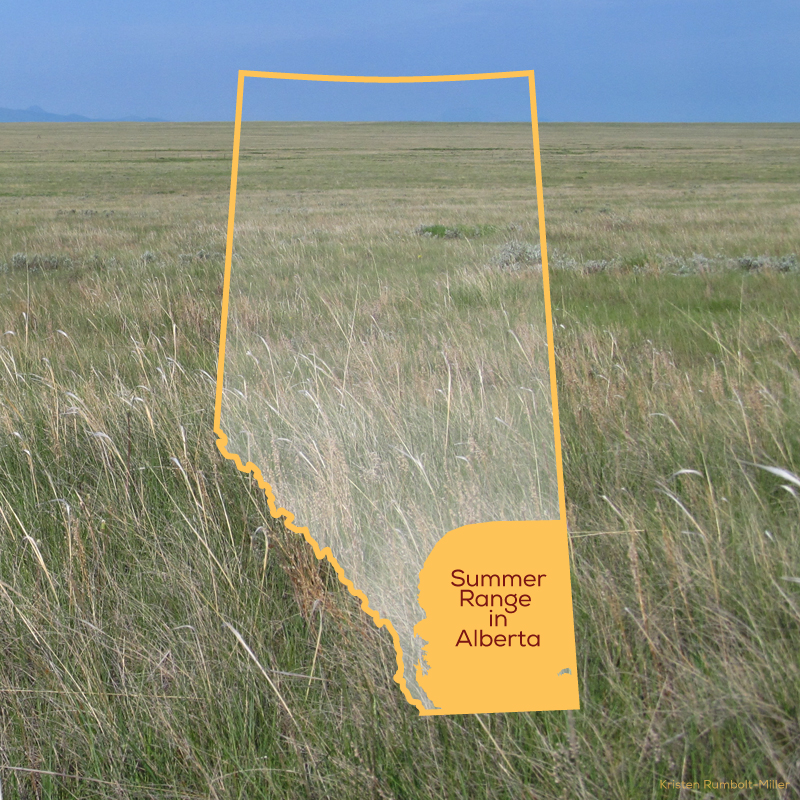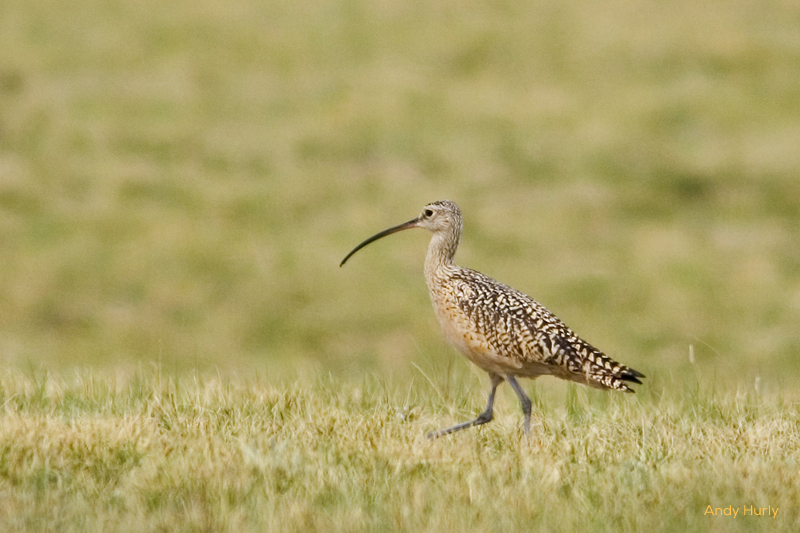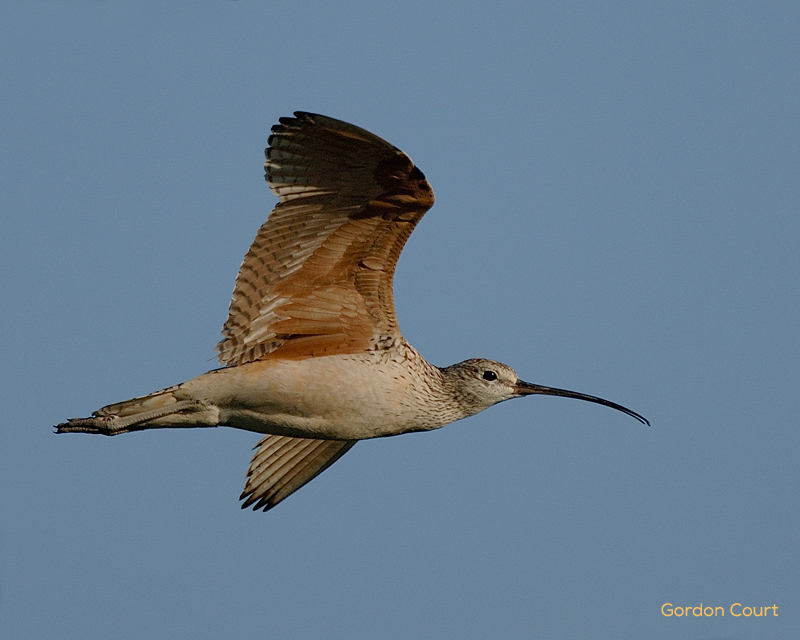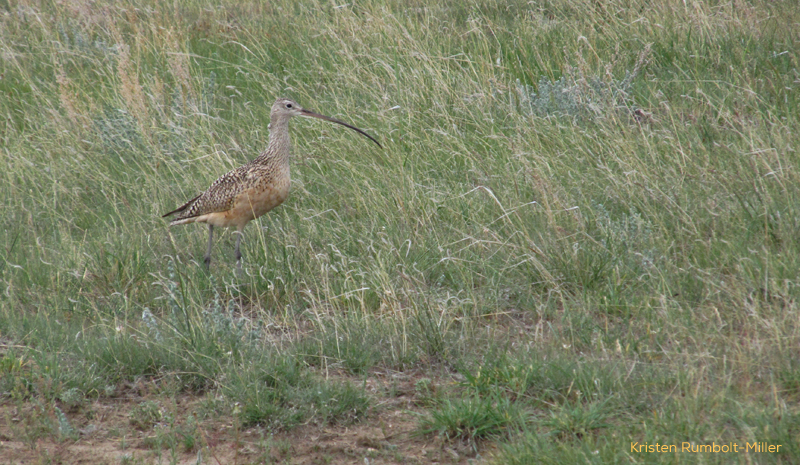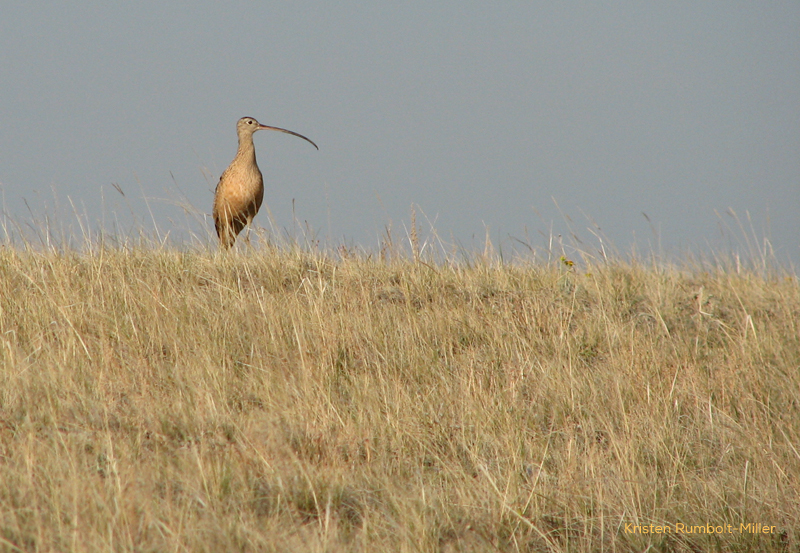Long-billed Curlew
Numenius americanus
Call of the Prairie
The very loud and distinctive “Cur-leeee Cur-leeee” call and long whistles of the curlew can be heard in native grasslands as early as April, indicating their return to their breeding grounds. While they are a shorebird, they do not hang out near water during spring and summer, preferring dry native grasslands for foraging and nesting.
Top Billing
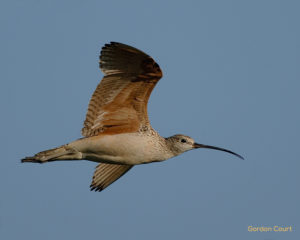
A long-billed curlew in flight.
Long-billed Curlews are easily identified by their long, down-curved bill that can be up to 21 cm long. If you see a pair together, the female is the one with the longer bill.
Insect Eaters
A curlew’s summer diet consists mostly of grasshoppers and beetles, although they will also eat earthworms and sometimes songbird eggs and chicks.
Ground Nesters
Curlews nest on the ground and although they vigorously defend their nests, the young and eggs are susceptible to predation by coyotes, ravens, badgers and even ground squirrels.
Population
A survey in 2001 estimated that there were between 19,000 and 28,700 curlews in Alberta. While this may seem like a lot, declines in other parts of its range suggest that this species should be monitored. A continent-wide survey in 2004 and 2005 found that 10-15% of the North American population and most of Canada’s curlews breed in Alberta. Thus, Alberta’s curlew population is critical to this species’ survival.
Current Threats
- Loss and degradation of native grasslands in their summer range in Alberta.
- Pesticide use impacts their food supply (grasshoppers and other invertebrates).
- Agricultural activities such as plowing and haying can result in loss of nests, eggs and chicks in cropland and tame pastures.
- Some mortality occurs due to collisions with vehicles.
- Climate change and rising sea levels may impact curlews on their wintering grounds.
Species@Risk Quiz
Test your knowledge about Alberta’s grassland species at risk
Long-billed Curlew
Question 1 |
Long-billed Curlews build their nests:
On the ground in grasslands
| |
In lone trees on the prairie | |
In cattail marshes and other wet areas |
Question 2 |
Long-billed Curlews spend their winters:
Along prairie rivers in southern Canada and northern USA
| |
On the beaches of Hawaii | |
Around lakes and coastlines in the southern USA and central America | |
All of the above |
Question 3 |
Curlew nests and eggs can be destroyed by:
Being run over by off-road vehicles
| |
Ravens, crows and magpies | |
Heavy rainfall in the spring | |
All of the above |
Question 4 |
The long curved bill of the curlew is perfect for:
Sword fighting with other curlews
| |
Catching grasshoppers and beetles | |
Grazing on prairie grasses and sagebrush |
Public
- If you are good at bird identification, consider volunteering for a Breeding Bird Survey route in the grasslands region.
- Avoid driving off-road vehicles in areas known to contain nesting Long-billed Curlews.
- Support native grassland habitat by choosing grass-fed meat in the grocery store.
- Voice your support for native grassland conservation with your political leaders.
- Educate yourself and your family about Long-billed Curlews and their role in the grassland ecosystem.
Landowners
- Hang on to your native grasslands and keep them healthy.
- Adopt grazing practices that allow carryover of vegetation and minimizes heavy grazing on native grasslands.
- Avoid using pesticides on or near native grassland.
- Consider restoring some of your degraded grasslands or marginal croplands with native vegetation typical of your area.
- Talk to your children and neighbours about the privilege of having Long-billed Curlews on your land.
- Contact MULTISAR to discuss management practices that might be beneficial to Long-billed Curlews on your property.
What MULTISAR Does
- Participates in curlew population surveys.
- Cooperates with landowners to restore cropland to native grassland at appropriate locations.
- Provides information about Long-billed Curlews and their habitat and recommendations for management practices compatible with their needs and the needs of cattle producers.
